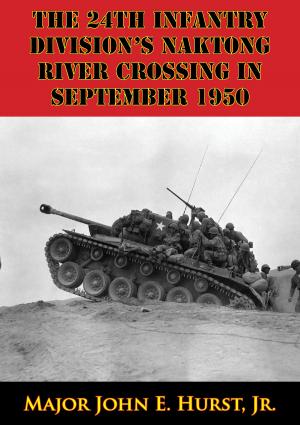Armor In Vietnam [Illustrated Edition]
Nonfiction, History, Military, Vietnam War, Asian, United States| Author: | Frederick Eugene Oldinsky | ISBN: | 9781786250162 |
| Publisher: | Normanby Press | Publication: | November 6, 2015 |
| Imprint: | Normanby Press | Language: | English |
| Author: | Frederick Eugene Oldinsky |
| ISBN: | 9781786250162 |
| Publisher: | Normanby Press |
| Publication: | November 6, 2015 |
| Imprint: | Normanby Press |
| Language: | English |
Includes 24 maps
This thesis begins with a brief history of armored vehicles from their earliest concepts to the modern battle tank of today. It critically examines the decision not to include tank units with the first American combat forces deployed in Vietnam and the irrationality of that decision in light of a similar decision made prior to the Korean conflict.
Tanks were deployed in limited numbers in Vietnam in spite of a decision to the contrary and, once there, I proved their usefulness and their ability to perform in a tropical environment against an elusive enemy. Examples of the tank’s effectiveness in Vietnam are given and the feasibility of deploying major armored forces to that country is discussed.
Problems created by insufficient armor are addressed as well as the limitations and vulnerabilities of tanks and other armored vehicles.
Armor doctrine is traced from the tank’s role in breaking the stalemate of World War I through the formative years of World War II, and its application to the war in Vietnam.
Since most armored weapons were designed primarily for conventional warfare, a number of modifications were required to adapt the weapons to an unconventional war. Some of the more significant modifications are described.
Finally, lessons learned by the Vietnam experience and their future application are discussed. Concluding consideration in the paper is whether or not decision makers will need these lessons learned or continue to make the same mistakes.
Includes 24 maps
This thesis begins with a brief history of armored vehicles from their earliest concepts to the modern battle tank of today. It critically examines the decision not to include tank units with the first American combat forces deployed in Vietnam and the irrationality of that decision in light of a similar decision made prior to the Korean conflict.
Tanks were deployed in limited numbers in Vietnam in spite of a decision to the contrary and, once there, I proved their usefulness and their ability to perform in a tropical environment against an elusive enemy. Examples of the tank’s effectiveness in Vietnam are given and the feasibility of deploying major armored forces to that country is discussed.
Problems created by insufficient armor are addressed as well as the limitations and vulnerabilities of tanks and other armored vehicles.
Armor doctrine is traced from the tank’s role in breaking the stalemate of World War I through the formative years of World War II, and its application to the war in Vietnam.
Since most armored weapons were designed primarily for conventional warfare, a number of modifications were required to adapt the weapons to an unconventional war. Some of the more significant modifications are described.
Finally, lessons learned by the Vietnam experience and their future application are discussed. Concluding consideration in the paper is whether or not decision makers will need these lessons learned or continue to make the same mistakes.
![Cover of the book Armor In Vietnam [Illustrated Edition] by Frederick Eugene Oldinsky, Normanby Press](https://www.kuoky.com/images/2015/november/500x500/9781786250162-DpCu_500x.jpg)

![Cover of the book Smoke Over Birkenau [Illustrated Edition] by Frederick Eugene Oldinsky](https://www.kuoky.com/images/2015/november/300x300/9781786255792-31tE_300x.jpg)












![Cover of the book The Patna Crisis Or Three Months At Patna During The Insurrection Of 1857 [Illustrated Edition] by Frederick Eugene Oldinsky](https://www.kuoky.com/images/2014/august/300x300/9781782894803-0EEW_300x.jpg)